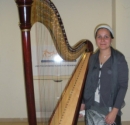
We recently had the pleasure of meeting the very engaging director of Jerusalem’s Israel Museum, James Snyder. Today the museum is one of the leading encyclopedic museums of the world, with 500,000 objects of fine art, archaeology, Judaica and Jewish ethnography which represent the history of world culture from nearly one million years ago to the present day.
James Snyder was raised in southwest Pennsylvania. While studying literature and art history in college he had an epiphany that he would become a museum professional, which would allow him to work and earn a living doing what he loved. After finishing the requisite studies, Snyder went to work for the Museum of Modern Art in New York, where he remained for 22 years, rising to the rank of deputy director. A specialist in museum design, in 1993 he co-authored with Joan Darragh “Museum Design: Planning and Building for Art.” He was in charge of the 1984 MOMA expansion with its concurrent development of Museum Tower.
In 1997 Snyder caught the attention of a headhunter searching for a new director for the Israel Museum. Though Jewish, Snyder had never visited Israel. However, after coming to Jerusalem and seeing the museum, an unbelievable impression was made on him and his wife. He recognized the incredible potential of the museum campus, with a need for reorganization to unlock that potential. The couple decided to take the plunge and accept the position, a decision they haven’t regretted, especially now that his vision of “redressing” the museum is coming to fruition.
To create the elegant solution to the museum’s needs, Snyder hired a team of architects: James Carpenter Design Associates of New York and the Israeli firms of Efrat-Kowalsky Architects and Lerman Architects and Town Planners. Taking advantage of underused space within the existing grid and tunneling underneath it, the new design streamlined and unified the museum while retaining the general look and feeling of the original design.
Snyder’s concept was to reinforce the original, amazing architecture designed by Alfred Mansfield and Dora Gad, while doubling the gallery space and giving clarity to the huge collection. This has been achieved within the existing footprint of the museum, at a cost of less than $100 million. The emphasis will be on viewing a “narrative illuminated by exemplary objects” while walking through the extensive collection. Though there will be far more space for exhibitions, in some cases such as the Bronfman Archeology wing, there will be fewer items on display, but the visitor will gain a much greater appreciation of the subjects covered.
Aware of the importance for first time visitors, including diplomats, to connect the Dead Sea Scrolls with the emergence of monotheism which occurred in ancient Israel and was central to the conceptual and iconographic development of the three monotheistic faiths, within the renewed museum, “everything connects,” says Snyder. For the first time, visitors will “feel a continuum” as they enter the main exhibition space at its nexus, with logical connections among the varied collections.
James Carpenter, who re-designed the building, is internationally known for his work with glass, which has been used abundantly in the museum. Because of the harsh sunlight, he has used thick, ceramic louvers on some facades, which allow a soft interior illumination, while retaining a largely open feeling. There is a new central concourse, protected from the sun, which will lead visitors from the front of the campus to its centerpoint, a feature that was totally absent until now.
Snyder hopes that the museum will take its place alongside the required visit of diplomats to Yad Vashem, inculcating the idea that Israel's ancient history is indispensable to the understanding of the modern world's debt to the path that led to monotheism and flowered thereafter as the world's great faiths and their related cultural imagery. The Israel Museum will have its grand reopening on July 25.
Visit the museum’s website at www.english.imjnet.org.il/htmls/home.aspx
 DEAR EDITOR 155
DEAR EDITOR 155 MODIIN ON THE MOVE
MODIIN ON THE MOVE HEALTH HINTS ONIONS FOR JAUNDICE
HEALTH HINTS ONIONS FOR JAUNDICE Art from the Heart
Art from the Heart Jewish Art Returns to Jerusalem
Jewish Art Returns to Jerusalem Musical Treats
Musical Treats Steve Kramer
Steve Kramer